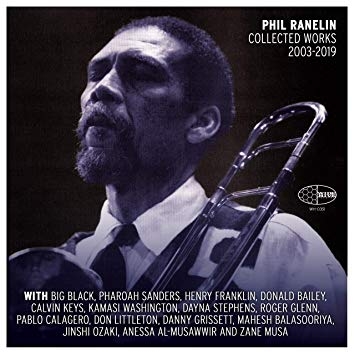
Phil Ranelin Collected Works 2003-2019
Phil Ranelin’s love for the slide trombone stems from the almost royal tradition that the trombone holds in Indianapolis’ Jazz heritage: and from the slide trombone’s spiritual position within the genesis of Jazz as an indigenous American cultural treasure. Phil Ranelin is a fourth generation Indianapolis native son and as such, he is a modern day continuum of J.J. Johnson and his “Naptown” slide trombone forefathers such as Reggie DuValle (Ranelin’s first private instructor), Tillman Buggs, Slide Hampton and others.
In the early history of Jazz, slide trombonist, Edward “Kid” Ory, was a legendary New Orleans’ funeral march “tailgater.” His position was at the end of the marching band, yet at the head of the “second line,” the common people. This tradition placed the trombone as the Jazz instrument that connected the living to the dead. This spiritual component is a very crucial part of the Jazz legacy that has been continuous throughout its evolution, in spite of its forced historical affiliation with the fast nightlife of the underworld and the stereotypical imagery of Jazz milieux in the arts as well as in commercial advertisement.
Louis Armstrong’s “When The Saints Come Marching In” and John Coltrane’s “A Love Supreme” are part of this Spiritual Jazz trek which includes Duke Ellington’s Sacred Concerts and the works of Sun Ra, Alice Coltrane, Pharoah Sanders, Doug Carn and Phil Ranelin who is grouped with them in what the Japanese categorize as “Spiritual Jazz.”
Like Ranelin’s life in music, the slide trombone stands as unquestionable authentication of what perseverance is all about. From early players such as Ory and Dicky Wells, to big band era soloist such as Lawrence Brown, Joe “Tricky Sam” Nanton and Trummy Young, followed by BeBop “Bone” revolutionaries such as Bennie Green, J.J. Johnson, Curtis Fuller, Melba Liston and Al Grey - Phil Ranelin stands on the shoulders of a long line of great trombonists who held their instruments up above the evolving trend to overlook the slide trombone as a preferred lead instrument. On www.trombone-usa.com Dutch trombonist, Rene Laanen documents Phil Ranelin and hundreds of other slide trombonist who continue to persevere.
As a Straight Ahead innovator, Phil Ranelin continues to explore new realms of collaborations with younger generations, with the presentations of atypical configurations, and with complex-rhythmic and melodic-groove juxtapositions.
Track Listing:
SIDE A
FREDDIE’S GROOVE / 7.35
HORACE’S SCOPE / 5.30
THIS ONE’S FOR TRANE / 8.43
SIDE B
LIVING A NEW DAY / 6.50
BLUE BOSSA / 6.14
METAMORPHOSIS / 7.30
SIDE C
A TEAR IN ELMINA / 5.49
CLOSE ENCOUNTERS / 5.47
SHADES OF DOLPHY / 8.34
SIDE D
IN SEARCH OF THE ONE / 8.48
MOORISH / 3.49
PERSEVERANCE 2019 / 9.48
SIDE E
FULL MOON / 6.33
EXCURSION TO FANTASY / 8.38
SPIRITUAL VIBRATIONS / 7.28
SIDE F
HOW DO WE END ALL THIS MADNESS / 7.11
FANTASY VIBRATIONS / 6.45
BLACK ON THE NU / 5.51
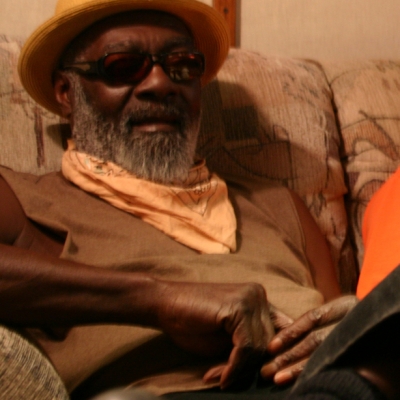
Big Black
Big Black (born Daniel Ray) is a master musician percussionist and conga player. During the 1960s he often worked with “jazz giants” Randy Weston, Freddie Hubbard, Ray Bryant, Johnny Barracuda, Junior Cook, Eric Dolphy and Dizzy Gillespie. He subsequently was dubbed “The king of Congas.”
Calvin Keys
Calvin Keys’ played guitar with such greats as Eddie Cleanhead Vinson and bassist Gerald Holts. At age 17, he first hit the road with sax player Little Walkin’ Willie. Soon after, he worked with Preston Love, of the Count Basie Orchestra and The Frank Edwards Organ Trio. That foundation led to working with one of the greatest organ trios of all time‚ The Jimmy Smith Trio, and soon he was recording on the legendary Blackjazz record label. Soon afterwards, he was hired to record and tour with Ray Charles, and was the guitarist for Ray’s Big Band.
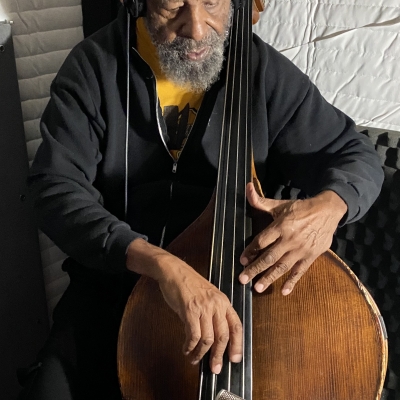
Henry Franklin, The Skipper
Henry Franklin is a jazz double-bassist who is perhaps best known for his solo albums The Skipper and The Skipper at Home on cult label Blackjazz Records. Henry has also toured and recorded with Hugh Masekela on his 1968 number one single, "Grazing in the Grass," and played with Masekela’s band at the Monterey International Pop Festival in June 1967.
Franklin has played and recorded with Freddie Hubbard, Bobbi Humphrey, Willie Bobo, Archie Shepp, Don Cherry, Count Basie, Stevie Wonder, Roy Ayers, O.C. Smith, and Al Jarreau.
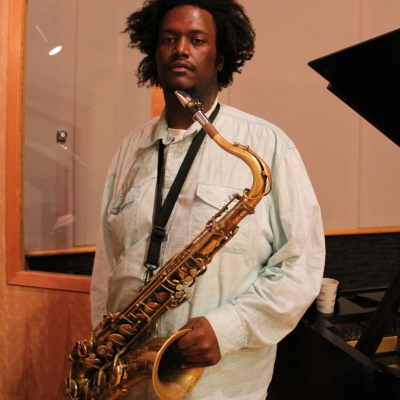
Kamasi Washington
Kamasi Washington is featured Saxophonist on Both Throttle Elevator Music and Phil Ranelin's Perseverance. Also as a composer Kamasi has scored for several films including Stacey Peralta's recent Independant Lens feature: Crips and Bloods: Made In America.
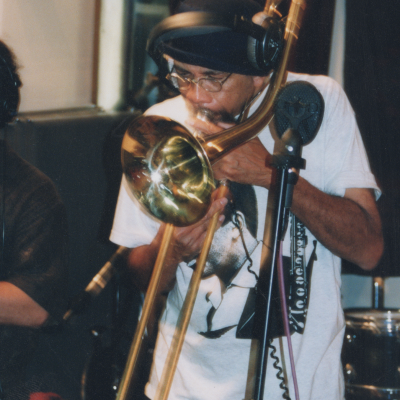
Phil Ranelin
Phillip Arthur Ranelin was born in Indianapolis, Indiana where he grew up under the influence of J.J. Johnson, Wes Montgomery, Earmon Hubbard, Pookie Johnson, Russell Webster, Willis Kirk, Jimmy Coe and Melvin Rhyne. Ranelin is loved and respected around the globe as a master trombonist of the J.J. Johnson tradition, as former Freddie Hubbard sideman and as co-founder of Detroit’s famed TRIBE Records.
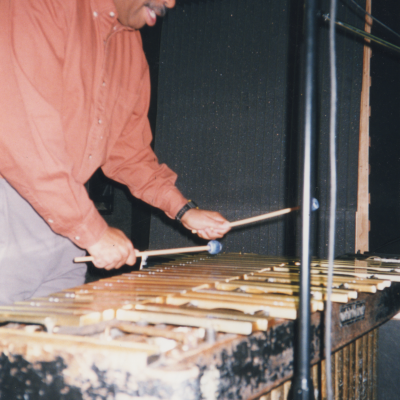
Roger Glenn
Recognized as a master flute and vibraphone player, Roger Glenn has played and recorded with such giants of Jazz and Latin music as Dizzy Gillespie, Mongo Santamaria, Herbie Mann, Cal Tjader and Rosemary Clooney, to name just a few.
